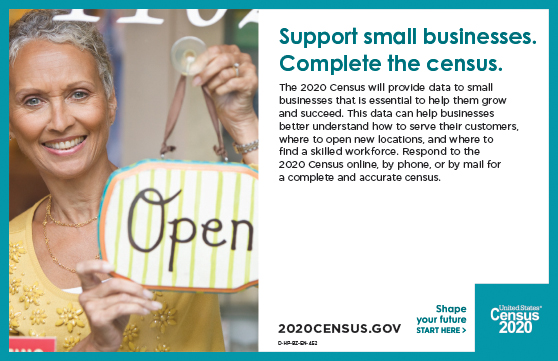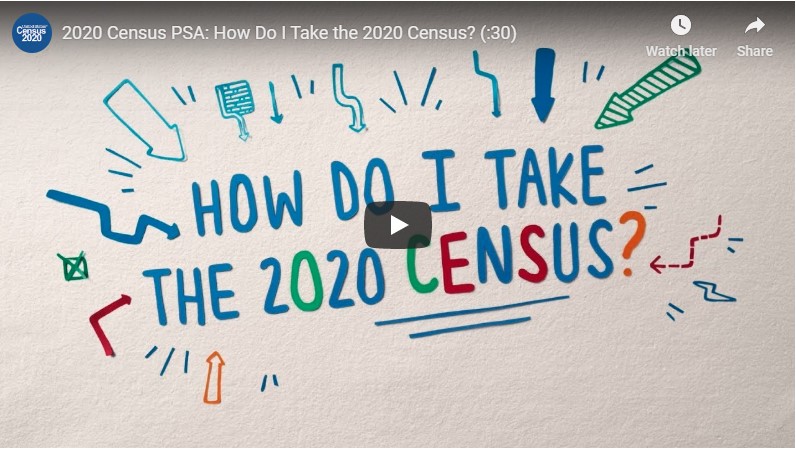
Some basic math illustrates the importance of an accurate census count for Flint and Genesee County.
“We cannot afford to miss anyone,” said Anthony Turner, Flint’s 2020 census coordinator. “A 10,000-person undercount is $2 billion (in federal funding) over 10 years that the city misses out on. Everybody will lose.”
Indeed, the results of this year’s census will touch a wide swath of everyday life for area residents, helping determine federal allocations for dozens of federal grant programs, including highway and transportation projects, education, public health services, Medicaid and supplemental nutrition, and business and industry development.
“Businesses use the data to make informed decisions as well, such as where to invest or build a new store or build a new office,” noted Tim Herman, CEO of the Flint & Genesee Chamber of Commerce. “They look at it for their strategies for hiring and whether they should expand their business or possibly close it.
“I can’t say enough about how important this census is.”

Communication is key
In essence, the local strategy for ensuring as complete of a count as possible boils down to one word: communication.
In late January, Flint Mayor Sheldon Neeley announced the formation of the Mayoral Complete Count Committee, a coalition of leaders from various sectors of the community charged with coordinating the city’s census efforts, developing outreach initiatives and providing information to residents.
“One of the things I realize is that awareness is key to a complete count,” Turner said shortly after the Complete Count Committee announcement. “Right now that message has not saturated to all four corners of the city of Flint.”
The city will also piggyback on education efforts by state government, which kicked off its census campaign in mid-February in partnership with the Michigan Nonprofit Association.
“I’m making sure everyone in Flint is talking to everybody else because we don’t want to waste resources or duplicate efforts,” said Turner, a Flint native who retired in 2013 after a 15-year career with the U.S. Census Bureau. “Our main thing is to make sure we communicate, advocate, support, collaborate and work in partnership from a city focus on how we can reach all four corners of the city with everything that’s going on.”
The Flint & Genesee Chamber is also spreading the word about the importance of census participation through various communication platforms and forums.

“The message to business leaders is that they can play a key role in the success of the 2020 census,” Herman said. “Our goal is to influence employers to take an active role in this count. We’re conveying the importance of being counted and we’re making sure they convey that importance to their employees and customers and are pointing employees directly to resources and providing assurance about the confidentiality of the information on the questionnaires.”
Reaching the hard to count
Sue Peters, vice president of community impact at the Community Foundation of Greater Flint, agreed that confidentiality is important to stress especially among segments of the community that distrust government.
The Community Foundation in January awarded a total of more than $300,000 to 34 local nonprofit organizations that work with typically hard-to-count populations, such as people of color, immigrants, young children and those traditionally served by nonprofits.
“We’ve been kind of on the ground, making connections and clarifying information about what it means to be online, what are the questions and what are the options for folks to respond – just some of that basic stuff,” Peters said. “I feel like together we’ll be able to make a very good push.”
Grant awards included $19,750 to the Communication Access Center for the Deaf and Hard of Hearing for census education, access and assistance to deaf community members and their families, and $19,355 to the Latinx Technology and Community Center of Greater Flint to bolster outreach efforts, address mistrust and serve as a hub for technology access.
For the first time this year, the U.S. Census Bureau will accept responses online – a convenience for many people but a potential obstacle in a community such as Flint where a substantial portion of households don’t have computers.
Other options are to return the questionnaire via mail or by telephone — which hard-to-count populations are also less likely to do, Turner said. “The data shows that this is a task that is hard to overcome.”
Addressing challenges
Turner said one response to the city’s “technology drought” will involve creating hubs at Sylvester Broome Empowerment Village, Berston Field House and other gathering places where people can access computers and learn about the census.
Beginning in mid-March, households will receive a notice in the mail to complete the census. April 1 is the official Census Day. In May, the U.S. Census Bureau will begin following up in person with households that haven’t responded – raising yet another potential issue.
Turner said applications for census enumerator positions were coming in slowly. “If we don’t have enough people to count, then the city of Flint will have an undercount, and we can’t afford that,” he said.
With Flint expected to lose population in the wake of the lead crisis, general malaise among residents is another concern, Peters said.
The U.S. Census Bureau reported that 79.1 percent of Flint residents participated in the 2010 census, and this year the agency is projecting a 74.1 percent response rate.
But Turner said he refuses to settle for lower expectations, especially after hearing similar direr projections for the 2010 census, when his territory as a census worker included Flint.
“Since I grew up here and I’m a Flintstone, I did not accept that,” he said. “We closed out 10 points higher than the projections said we would. So now going into 2020, they’re saying we’re going to be lower again. We’re not settling for that. We’re going for a complete count.”

